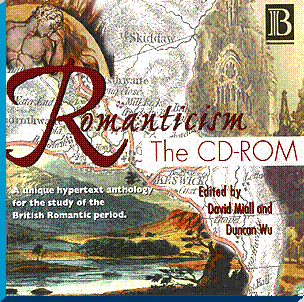News
![]() Internet
sampler. I have produce a sample
of material from the CD. It includes some menu screens, several of the
texts from the CD, and graphics that are the same size as on the CD (warning:
they may download rather slowly).
Internet
sampler. I have produce a sample
of material from the CD. It includes some menu screens, several of the
texts from the CD, and graphics that are the same size as on the CD (warning:
they may download rather slowly).
![]() Blackwell
Publishers have published a single-user version of the CD bound with the Wu
anthology (2nd edition), price: £16.99 or $44.95 US (ISBN: 0631 222693): see
the publisher's
web page.
Blackwell
Publishers have published a single-user version of the CD bound with the Wu
anthology (2nd edition), price: £16.99 or $44.95 US (ISBN: 0631 222693): see
the publisher's
web page.
![]() There is
also now a publisher's Romanticism
web site devoted to the anthology and CD and related materials.
There is
also now a publisher's Romanticism
web site devoted to the anthology and CD and related materials.
For an essay on teaching Romanticism in relation to the CD, see this contribution to Romanticism On the Net (November 1999): The Resistance of Reading: Romantic Hypertexts and Pedagogy.
Overview
This hypertext anthology offers a range of resources for the introductory study of the British Romantic period. The full text of the first edition of Romanticism: An Anthology (Blackwell, 1994), ed. Duncan Wu is provided, complete with annotations and hypertext links. In addition, the package provides many additional texts from the Romantic period, including reviews from journals, together with orientation and study materials in the form of guides, maps, and chronologies. It offers little interpretive writing, since this is more accessible in library collections; but it does include some guide to study methods, intended to help students in carrying out their own projects, whether singly or in groups. As a rough estimate of the scale of the resources, the Wu Anthology contains approximately 580,000 words; the additional texts added to this CD package bring the number of words to over two million; in addition, over 1200 full screen graphics are available.
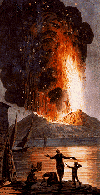 Texts are generally taken from first editions. Those not previously included in the Wu Anthology also include page numbers from the original editions between angle brackets, e.g., <P 43>: these are placed at the beginning of the text for that page. Sources of graphics or photographs are provided at the foot of the screen, and further information (e.g., the name of the artist) is usually provided in the text from which the graphic is called. Complete information on each work of art is provided in the Art Index.
Texts are generally taken from first editions. Those not previously included in the Wu Anthology also include page numbers from the original editions between angle brackets, e.g., <P 43>: these are placed at the beginning of the text for that page. Sources of graphics or photographs are provided at the foot of the screen, and further information (e.g., the name of the artist) is usually provided in the text from which the graphic is called. Complete information on each work of art is provided in the Art Index.
A general Index provides immediate access to all the files in the anthology, both texts and graphics. A web version of the index is available here, supplemented with reduced versions of several graphics. Other facilities include the ability to bookmark your current place in the anthology; to add personal annotations to a text; and full-text searching. Teachers may also welcome the facility to create tours through texts that they have chosen.
Errata
The reference to Davy, Early Speculations on Life in the Index should be ignored.
Reports of other errata can be made to David Miall. Technical inquiries about installation or other computer-related problems should be directed to newmedia@blackwellpublishing.com
The editors would welcome suggestions for additions and changes to the CD. We will try to incorporate such suggestions in future editions when possible. Please email comments to David Miall.
Romantic writing, for the purposes of this anthology, is defined to include poetry, prose (essays of various kinds and informal writings such as letters), and the Gothic fiction that was being written at the same time. The best known poets who wrote during the period were Blake, Wordsworth, Coleridge, Byron, Shelley, and Keats, but this anthology also provides a generous selection of other poets, including many women poets whose work is now arousing considerable interest. The poets were accompanied by a brilliant group of essayists, such as Lamb, Hazlitt, De Quincey, and Peacock, and a remarkable group of Gothic fiction authors, such as Ann Radcliffe, Matthew Lewis, Mary Shelley, and Charles Maturin. This literature has come to be known as Romantic, a term that has been much debated: no single definition appears to meet all the different aspects (and paradoxes) of the period. Nor is the period itself well defined: while the most important writing associated with the term takes place between 1789 (when the French Revolution began) and 1824 (the death of Byron), we include many other important selections written before and after these dates, from Thomas Warton to the early Tennyson.
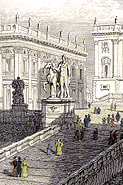 The writers were dependent on various features peculiar to their time: a reaction against previous literary styles, arguments with eighteenth century and earlier philosophers, the decline in formal Anglican worship and the rise of dissenting religious sects, and the rapid and unprecedented industrialization of Britain and consequent changes in its countyside. Above all, however, it was the impact of the French Revolution which gave the period its most distinctive and urgent concerns. Following the Revolution itself, which began in 1789, Britain was at war with France on continental Europe for nearly twenty years while massive repression of political dissent was implemented at home. Against this background much of the major writing of the period, including its Gothic fiction, can be seen as a response to changing political and social conditions in one respect or another. Given the political repression, for example, much of the fiction can be understood as an indirect exploration of issues of gender and power whose direct expression was either unthinkable or censored.
The writers were dependent on various features peculiar to their time: a reaction against previous literary styles, arguments with eighteenth century and earlier philosophers, the decline in formal Anglican worship and the rise of dissenting religious sects, and the rapid and unprecedented industrialization of Britain and consequent changes in its countyside. Above all, however, it was the impact of the French Revolution which gave the period its most distinctive and urgent concerns. Following the Revolution itself, which began in 1789, Britain was at war with France on continental Europe for nearly twenty years while massive repression of political dissent was implemented at home. Against this background much of the major writing of the period, including its Gothic fiction, can be seen as a response to changing political and social conditions in one respect or another. Given the political repression, for example, much of the fiction can be understood as an indirect exploration of issues of gender and power whose direct expression was either unthinkable or censored.
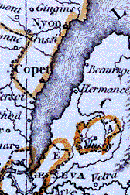 It was a revolutionary time for poetics: arguably it was during this time that the foundations of modern poetry were laid. The poets debated the new significance they wished to see in poetry: they wrote accounts of their theoretical beliefs, and wrote too with a remarkable openness in letters, diaries, and notebooks about the process of writing, their friendships, their travels, and their metaphysical inquiries. The significance of the period can sometimes be grasped more readily from such incidental writing than it can from the poetry. A number of such extracts are offered in this hypertext anthology.
It was a revolutionary time for poetics: arguably it was during this time that the foundations of modern poetry were laid. The poets debated the new significance they wished to see in poetry: they wrote accounts of their theoretical beliefs, and wrote too with a remarkable openness in letters, diaries, and notebooks about the process of writing, their friendships, their travels, and their metaphysical inquiries. The significance of the period can sometimes be grasped more readily from such incidental writing than it can from the poetry. A number of such extracts are offered in this hypertext anthology.
The poets are also notable as a group for their travels and for making important and often precise use of landscape. To help the reader locate the sites in Britain and Europe which were important to the Romantic poets, a number of maps and pictures are also included (see Geography). The poets knew one another to various degrees, or were linked in significant ways to other contemporary writers, such as Godwin: these relationships influenced and at times were responsible for the poems they wrote. It is also important to gain a sense of what contemporary political events were taking place. Thus the hypertext includes a chronology of the period, showing year by year the main activities of the period both literary and historical (see Contexts).
Editorial procedure
The text of the Wu Anthology is available in full through the Texts section of the CD. Several texts have been added to Wu's selection and edited along similar principles, such as Book I of Wordsworth's The Excursion (1814), and Shelley's "Julian and Maddalo" and "The Triumph of Life."
In offering other texts relevant to Romantic studies, my aim has in most cases been to provide substantial extracts, much longer than would be possible in a printed anthology. With the reviews from contemporary journals I have aimed for completeness in the case of Gothic fiction, since these have not previously been collected (I exclude only the lengthy extracts from the novels which are a common feature of the reviews of this period and, in a few cases, detailed summaries of the novel under review). Other collections of reviews, such as those for Burke's Reflections or Godwin's Memoir of Wollstonecraft, are intended to be representative rather than complete. In choosing texts for inclusion, I have kept in mind the question of accessibility: where an important text is readily available in modern reprints or anthologies, such as Godwin's Political Justice, I have not usually (at least in this first edition of the CD) included extracts beyond those available in Wu's anthology. Thus the majority of texts I have provided are now available only in scarce modern reprints, or have never been reprinted.
Texts are transcribed as far as possible exactly as they appear in their original form, with no attempt to modernize spelling or punctuation. The only exception to this practice is that the long-s is eliminated, and obvious printer's errors are silently corrected. Texts are lightly annotated: where possible I have identified quotations and provided translations of passages in languages other than English. The difficulty of representing Greek reliably on the computer screen has required Greek characters to be transliterated.
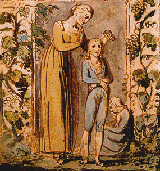 The graphics available on the CD consist primarily of landscape, intended to enable the reader to gain an impression of the sites in Britain and the European mainland that were important to the Romantic writers. The graphics include both modern photographs, where these seemed worth including (i.e., the landscape now is not radically different from what would have been seen in the Romantic period), and a wide selection of contemporary prints and paintings. In choosing works of art I have, as with the selection of texts, been guided by the principle of availability. Thus, little or nothing is included of the better known artists of the period, from Reynolds to Turner, since reproductions of their work are widely available. Most of the art to be found here illustrates the remarkable flowering of the market for prints and illustrated books created to meet the taste of the period for landscape and, especially, the sublime. Much of this work is little known, being available only in archive collections not on public display. Other prints are taken from treatises such as Hamilton on volcanoes or Repton on landscape gardening. I have also provided a selection of Blake's extraordinary prints, accessible with his poetry in Texts (but see also Stedman in Contexts).
The graphics available on the CD consist primarily of landscape, intended to enable the reader to gain an impression of the sites in Britain and the European mainland that were important to the Romantic writers. The graphics include both modern photographs, where these seemed worth including (i.e., the landscape now is not radically different from what would have been seen in the Romantic period), and a wide selection of contemporary prints and paintings. In choosing works of art I have, as with the selection of texts, been guided by the principle of availability. Thus, little or nothing is included of the better known artists of the period, from Reynolds to Turner, since reproductions of their work are widely available. Most of the art to be found here illustrates the remarkable flowering of the market for prints and illustrated books created to meet the taste of the period for landscape and, especially, the sublime. Much of this work is little known, being available only in archive collections not on public display. Other prints are taken from treatises such as Hamilton on volcanoes or Repton on landscape gardening. I have also provided a selection of Blake's extraordinary prints, accessible with his poetry in Texts (but see also Stedman in Contexts).
Further Information
An article about the hypertext, "Electronic Romanticism: The CD," is in Romanticism on the Net.
For examples of teaching and student work that draws on Romanticism: the CD, my web site normally includes material for several courses on Romantic topics. Currently these are: Gothic Fiction, Romantic Poetry and Prose, "Tintern Abbey," and Romantic Travellers.
The hyperwriter program used is the run-time version of HyperWriter! The authoring program used to be available from Ntergaid. But the company was bought several years ago and the software is now discontinued.
